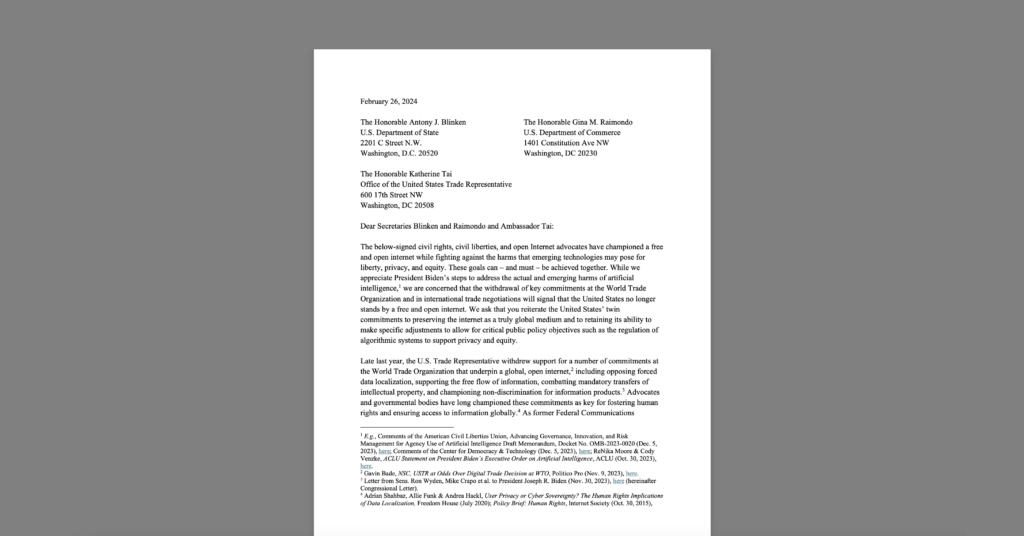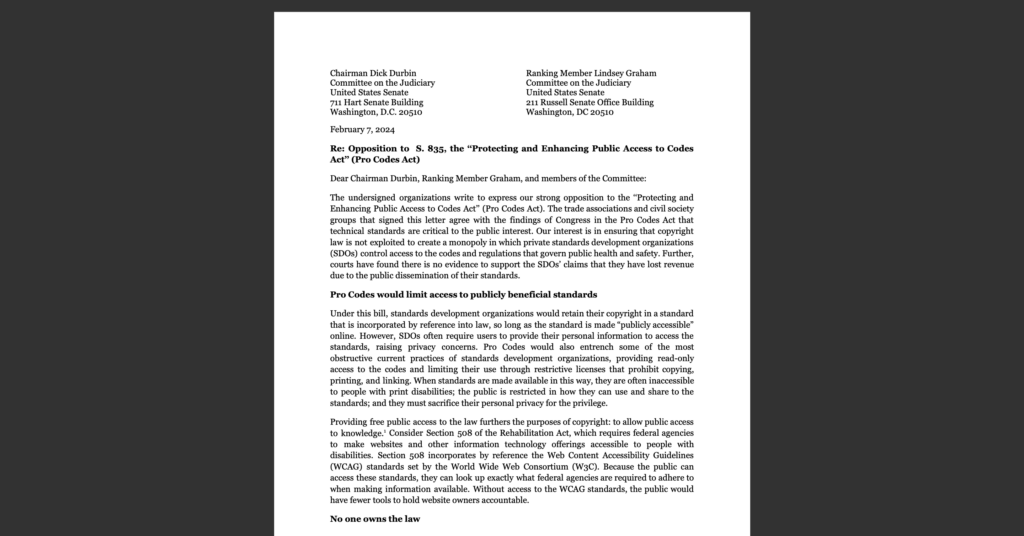The Questions Senators Should Ask Key Enforcement Agencies About Big Tech & Antitrust
For those who watch competition policy issues closely, there’s an exciting Senate Judiciary Committee event coming up later this month: the heads of the two federal antitrust agencies will testify in an oversight hearing. These semi-regular hearings are usually opportunities for the agencies’ leaders to tout their recent victories and build the case for more resources. But with all the attention on big tech and antitrust, this one could be different.
The Committee members include some of the Senate’s antitrust heavy-hitters, including several former state Attorneys General who have experience bringing antitrust cases. So what should they and their colleagues ask Joe Simons, FTC Chairman, and Makan Delrahim, Assistant Attorney General for Antitrust at the oversight hearing? I’d suggest two areas: 1) why haven’t the agencies brought more single-firm conduct cases, and 2) how are they integrating new thinking about tech antitrust issues into their work?
1) Investigations into single-firm anticompetitive conduct
Most of the federal government’s antitrust resources are targeted at merger investigations and anticompetitive conduct by groups of companies, not on whether individual firms with market power are harming competition. Consider this: the Department of Justice brought three cases challenging mergers as anticompetitive just this summer, but it hasn’t brought even one case against a big company for abusing market power in years. The record at the FTC is only slightly better; it has brought one new single-firm conduct case since President Trump took office.
The Committee members should take note of an odd juxtaposition. We have increasingly giant tech companies with consumers interacting with those tech giants in more and more aspects of their lives. But there are almost no cases from the antitrust enforcers challenging those companies’ conduct. To be clear, simply being a big company does not raise antitrust issues, but history teaches that powerful companies can act in anticompetitive ways, like making it hard for rivals to break into the market, or putting onerous restrictions on customers, and that conduct can harm competition itself. The Committee hearing should aim to gather information about why there have been so few cases about the conduct of large tech companies.
To suss that out in the oversight hearing, Senators could ask:
- How many investigations do you currently have into single-firm anticompetitive conduct, and how many of those involve tech giants?
- Do you think it is likely that your agency will file any new single-firm conduct cases before the end of 2019?
- Has the leadership at either agency declined to bring any cases that staff recommended, as regards single-firm conduct cases?
- How much of your leadership team’s time is devoted to single-firm conduct cases, compared to merger cases or multi-firm conspiracy cases?
- Lastly, in recognition of the blazingly fast speed of digital markets, what is the average length of single-firm anticompetitive conduct investigations, and what are you doing to speed them up?
2) Modern approaches to antitrust tech enforcement
Our antitrust laws are incredibly broad and flexible, but applying them to the challenges posed by big tech requires creative approaches. As one example, as in any antitrust case, the government must define the market where competitive harm occurred. One of the traditional ways of defining the market in an antitrust case is to ask what other products buyers would turn to if a seller increased prices by five to ten percent. But when the consumer-facing price is zero, as it often is for web searching, social media platforms, and some other parts of the digital economy, that test doesn’t work. This doesn’t mean that enforcers can’t take action, just that they need to be creative instead of relying on old-school techniques.
It would be helpful for Senators to ask our top antitrust enforcers how they are adapting traditional tools to technology companies, both large and small. Senators could ask:
- How are you approaching market definition in markets where consumers get services for free?
- Some tech companies use free services to increase customer loyalty. That can be procompetitive. Companies may also try to lock in customers so they can’t easily switch providers. How do you tell the difference between loyalty and lock-in, and is that different for tech compared to other parts of the economy?
- Some tech companies operate as platforms, where they bring two sides together. It could be advertisers coming to the platform to reach consumers, who join the platform to view content. Or it could be merchants offering products for sale on the platform, and consumers buying them there. Of course, there are analog “platforms” too, like shopping malls. When you are assessing the competitive impact of platforms, do you treat online platforms differently from offline ones? If the platform company’s conduct harms one side of the platform but benefits the other, how do you balance those effects?
- Are you concerned that the expanding reach of many of the largest tech firms raises new issues about potential harms to consumers? For example, does the ability to collect data about consumers in many separate arenas have the potential to harm competition even though the different arms of a company may not be direct competitors themselves?
- Finally, it was widely reported last summer that the DOJ and FTC allocated specific companies to each agency. Is that true, and if so, why did you do so?
One of the biggest roadblocks to advancing competition issues is a lack of information about the government’s approach to enforcement. Hopefully this hearing with the two top antitrust enforcers will fill some of that gap.


